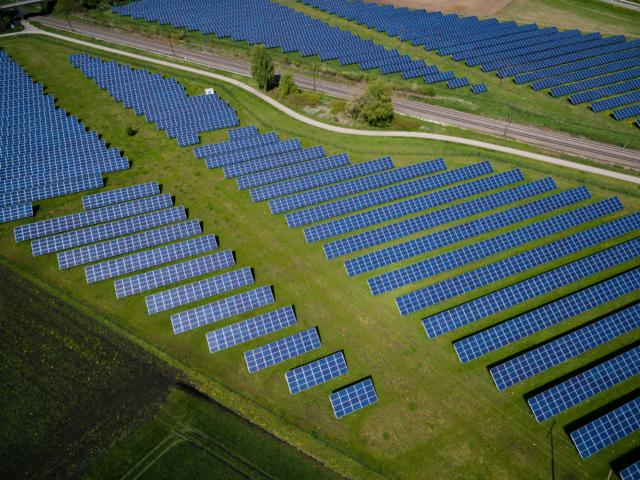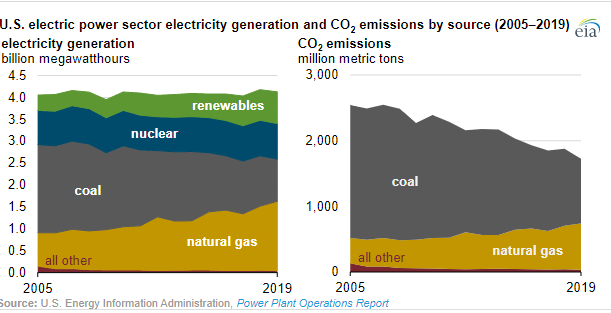
January 26, 2022
Greening the Grid: The evolution of emissions from purchased electricity
By Erin Williamson, Manager, Energy & Sustainability Strategy

In this first of a two-part series, Edison Energy’s Erin Williamson, Manager, Energy & Sustainability Strategy, lays out the pathway to a cleaner, greener grid.
As companies, organizations, and governments increasingly take responsibility for addressing their climate pollution and set a path to decarbonize, one of the first places they look at is their electricity usage. To pursue more ambitious climate and greenhouse gas (GHG) reduction goals, it is critical to explore future scenarios internally and externally that will shape the strategies that support decarbonization. While it is impossible to lock in the precise impacts of market forces, evolving business operations, growth, and policies, it is critical to understand the macrotrends that will inform decarbonization strategies.
While some organizations may be able to forecast internal factors such as revenue, expansion, or contraction of operational footprint or other business transformations that feed into future emissions projections, external factors are much harder to predict.
Direct GHG emissions sources (also known as Scope 1) from fossil fuel consumption in an organization’s reporting boundary tend to have fixed emissions factors (GHG per unit consumed). Conversely, indirect sources (such as Scope 2, representing emissions associated with purchased electricity, steam, heat, and cooling) are not fixed, may be location-dependent, and fluctuate with market forces. In particular, electricity may represent a large source for organizations within their operational control, yet predicting how emissions embedded in electricity purchased from the grid will change over time is far from an exact science.
Accounting for Scope 2 emissions comes in two forms. The first is location-based, which pulls an emissions factor from a grid-average source, such as the U.S. EPA’s Emissions & Generation Resource Integrated Database (eGRID). The eGrid factors are updated every year or two to inform the user about how much carbon dioxide (and other GHG like methane and nitrous oxide) is emitted per unit of electricity. These are derived from regional averages that may vary significantly, depending on which generation sources are powering that area of the country.
The second accounting methodology is market-based, which not only captures an organization’s low- or no-carbon electricity procurement choices but may also reference more specific utility-provided emission factors representing the emissions from the actual electricity delivered to the customer’s facilities.
The emissions reported within these two different methodologies may be significantly different, but it is best practice in standard reporting frameworks like CDP to disclose both location-based and market-based Scope 2 emissions.
Given that an organization’s Scope 2 purchased electricity emissions are not only dependent on how much electricity (MWhs) they are purchasing annually but also the emission factors associated with each MWh, understanding the impact of each of those factors into the future can help companies prepare to take action to meet climate targets.
Organizations can control how much electricity they purchase but have minimal control over the emissions factors they inherit from the mix of sources like natural gas, coal, solar, wind, nuclear or hydropower that go into electricity generation. A patchwork of factors may contribute to the composition of emissions factors. State policies like Renewable Portfolio Standards (RPS), proximity and availability of generation resources, commodities markets, and infrastructure all influence how “greening the grid” will happen over the next years and decades.
While no one can predict how future Scope 2 emissions factors will shift, we can look to reliable resources to understand and extrapolate past trends. The U.S. Energy Information Agency (EIA) performs numerous analyses on U.S. grid mixes and associated carbon emissions.
According to a recent EIA report, “In 2019, the U.S. electric power sector produced 1,724 million metric tons (MMmt) of CO2, 32% less than the 2,544 MMmt produced in 2005,” despite a relatively flat trend in electricity generation over that period (see chart below).
The report attributes this decrease over the last 15 years to a transition from coal generation to natural gas generation, with natural gas having a lower carbon dioxide impact per unit of electricity produced than coal. The renewable energy source penetration also doubled from 9% to 18% during that same period, as wind and solar power plants became more commercially applicable and affordable, driving approximately 30% of the total decrease in emissions.

Although the EIA and other U.S. government sources do not provide specific forecasting on future emissions factors, the Edison Energy team has supported clients’ understanding of future emissions associated with Scope 2 purchased electricity.
We recently worked with a higher education institution with a 50% GHG reduction target to estimate the overall impact of greening the grid on their future emissions profile by analyzing forecasted trends in electricity sources across the client’s goal period. By synthesizing future generation trends, market outlooks, policy trends and more, we can approximate future impacts associated with electric power consumption.
While there is not a “one size fits all” projection for how we expect grid emissions to change broadly across U.S. and global markets, Edison has developed scenario analyses and sensitivities on grid projections for how a client’s load may be expected to generate GHG in support of a climate goal process.
More broadly, we expect to see the grid trend downward in emissions. To accelerate decarbonization of Scope 2, it’s important to actively reduce electricity consumption (which is rewarded in both location-based and market-based accounting) and substitute traditional electricity consumption with low- or no-carbon products such as Virtual Power Purchase Agreement contracts (VPPAs), green utility tariffs, or unbundled renewable energy certificates (RECs).
Click here to read part two of the series.
Join Our Mailing List
Explore how Edison Energy helps clients set and achieve their energy and sustainability goals.
Read more
Erin Williamson
Senior Manager, Energy & Sustainability Strategy
I work with clients to support their sustainability needs, from greenhouse gas management to strategic planning to goal setting and beyond.
Prior to joining Edison, I worked in the corporate environmental sustainability office at Northrop Grumman, a Fortune 100 global security company. I handled everything carbon-related and therefore have a client’s perspective on navigating the challenges of implementing ambitious decarbonization initiatives. I also led a GHG work group for the International Aerospace Environmental Group, where we were focused on developing industry supplemental guidance on reporting, and I’m proud to have led a huge effort to build a Scope 3 reporting tool and guidance tailored to the complex supply chain of the aerospace and defense industry.
Educational Background
Master of Environmental Science and Management – Bren School at UC Santa Barbara
B.S./B.A. Dual Degree in International Affairs and History – Florida State University




